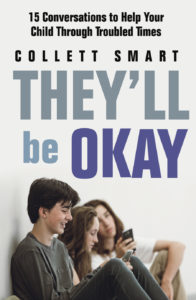
We teach both water and road safety to the children in our care — it is equally important that we teach children Body Safety. Body Safety aims to empower children with skills and knowledge that will lessen the likelihood of them becoming victims of childhood sexual abuse.
Jayneen Sanders is my go-to expert on Child Protection. She has also contributed to my book, ‘They’ll Be Okay’. Jay says, “Body Safety Education is not only a parent’s responsibly, it is also the community’s. Ask your child’s kindergarten or primary school if they are running such a program. If they are not, ask why not. And please lobby for it. Remind them that sexual abuse is irreversible but it is preventable!”
The following Body Safety skills can be taught throughout your child’s life and as part of daily conversations.
1. Naming body parts
As soon as your child begins to talk, name each body part correctly including the genitals, i.e. penis, vagina, vulva, bottom/buttocks, breasts and nipples. Explain to your child that their ‘private parts’ are the parts under their bathing suit. Note: a child’s mouth is also known as a ‘private zone’. Avoid the use of ‘pet names’ to describe the genitals. This way, if a child is touched inappropriately, they can clearly state where they were touched.
2. Explain the terms ‘private’ and ‘public’
‘Private’ means just for you. Talk about a toilet as being a private place but the kitchen, for example, is a public space because it is shared. Relate these terms to both spaces and body parts.
3. No one has the right to touch or ask to see their private parts
Teach your child that no one has the right to touch or ask to see their private parts, and if someone does, they must tell a trusted adult straightaway. Reinforce that they must keep on telling until they are believed (a child will need to tell 3 adults before they are believed, Australian Childhood Foundation, 2010). As your child becomes older (3+) help them to identify three to five trusted adults they could tell anything to and they would be believed. These people are part of their Safety Network. Note: at least one person should not be a family member.
4. Telling a trusted adult
Teach you child that if someone (i.e. the perpetrator) asks them to touch their own private parts, shows their private parts to the child or shows them images of private parts that this is wrong also, and that they must tell a trusted adult on their Safety Network straightaway. Reinforce that they must keep on telling until they are believed.
5. Talk about feelings
At the same time as you are discussing inappropriate touch, talk about feelings. Discuss what it feels like to be happy, sad, angry, etc. Encourage your child in daily activities to talk about their feelings, e.g. ‘I felt really sad when … pushed me over.’ This way your child will be more able to verbalize how they are feeling if someone does touch them inappropriately.
6. Use the terms safe’ and ‘unsafe’
Talk with your child about feeling ‘safe’ and ‘unsafe’. Discuss times when your child might feel ‘unsafe’, e.g. being pushed down a steep slide; or ‘safe’, e.g. snuggled up on the couch reading a book with you. It is important children understand the different emotions that come with feeling ‘safe’ and ‘unsafe’.
7. Discuss Early Warning Signs
Discuss your child’s Early Warning Signs when they feel unsafe, i.e. heart racing, feeling sick in the tummy, sweaty palms, etc. Let them come up with some ideas of their own. Tell your child that they must tell you or a person on their Safety Network if any of their Early Warning Signs occur. Reinforce that you will always believe them and that they can tell you anything.
8. Discourage the keeping of secrets
As your child grows, try as much as possible to discourage the keeping of secrets. Talk about ‘happy surprises’ instead such as not telling Granny about her surprise birthday party. Compare this with ‘unsafe’ secrets such as someone touching their private parts. Make sure your child knows that if someone does ask them to keep an unsafe secret that they must tell someone on their Safety Network straightaway.
9. Teach – ‘No!’ or ‘Stop!’
Discuss with your child when it is appropriate for someone to touch their private parts, e.g. a doctor when they are sick (but making sure they know you must be in the room). Explain that if someone does touch their private parts (without you there) that they have the right to say, ‘No!’ or ‘Stop!’ and outstretch their arm and hand.
10. Reinforce – being the boss of their own body
Reinforce to your child that they are the ‘boss of their body’ and they do not have to kiss or hug a person if they don’t want to. Explain that we all have a ‘body boundary’. This is an invisible space that surrounds our body, and that no one can enter another person’s body boundary unless they allow it.





